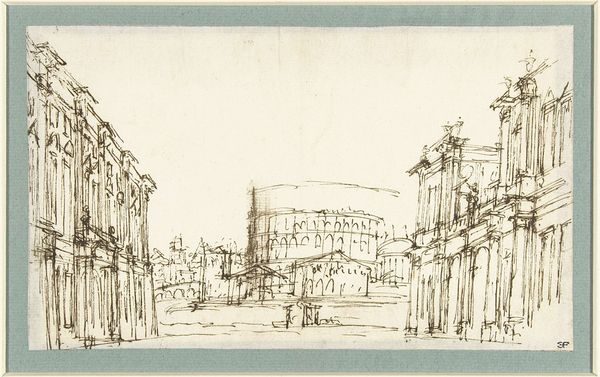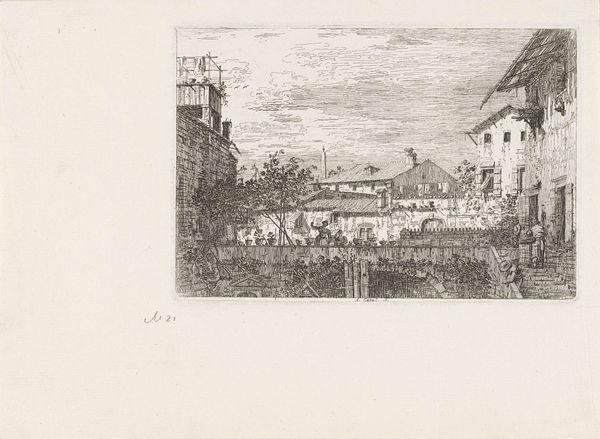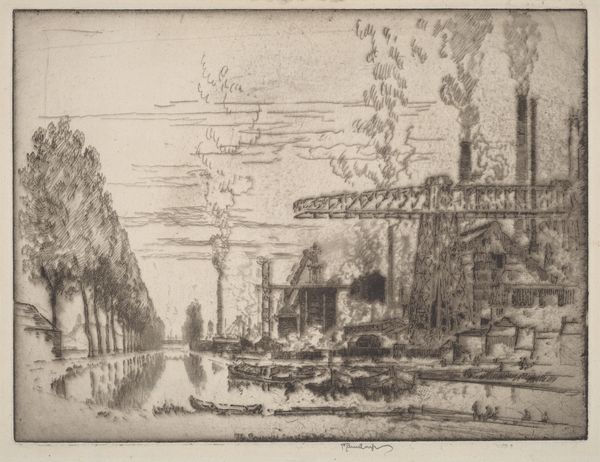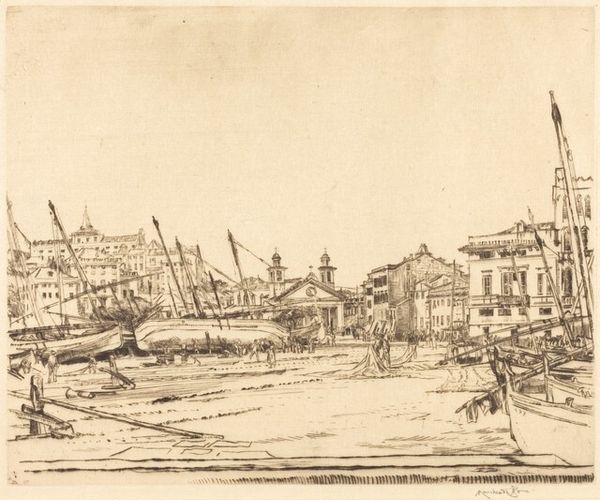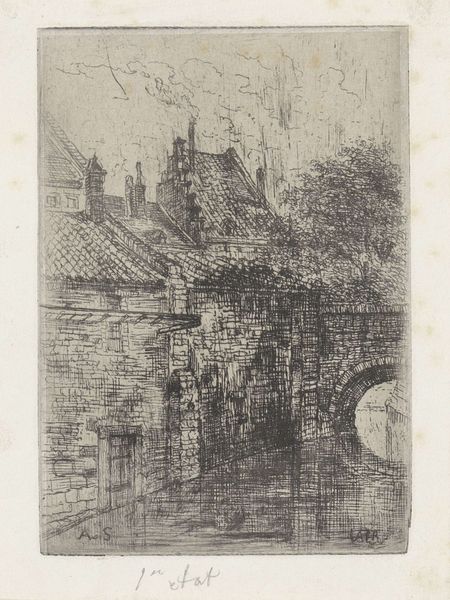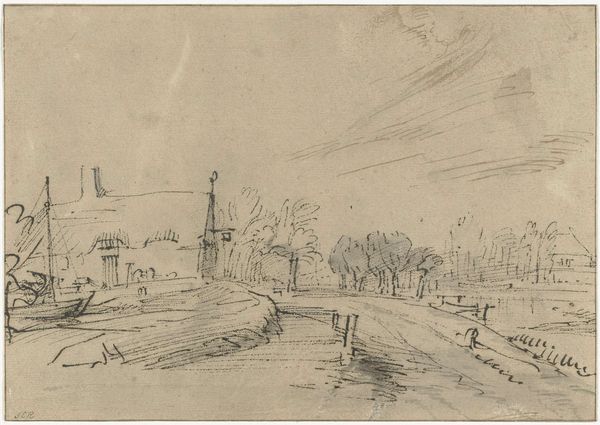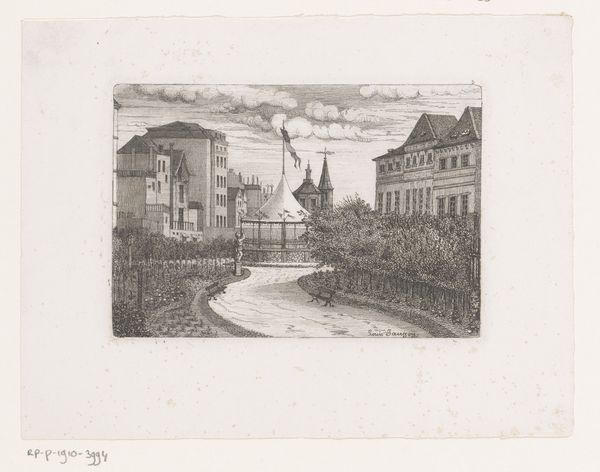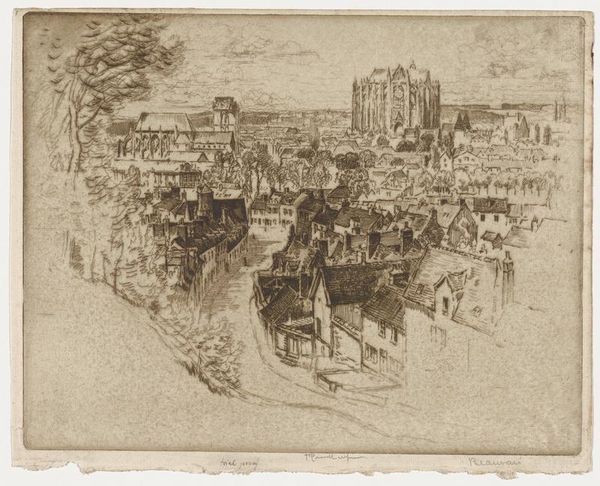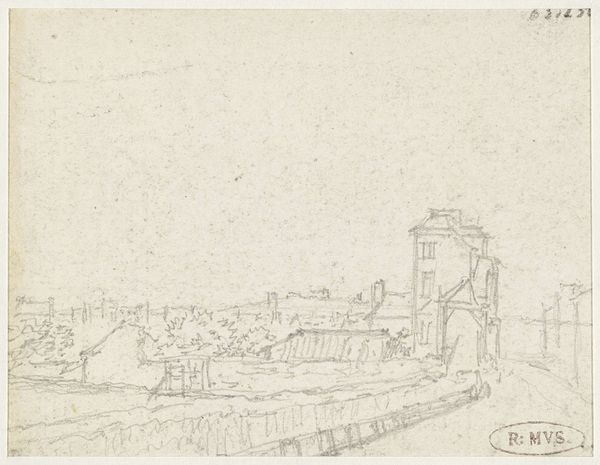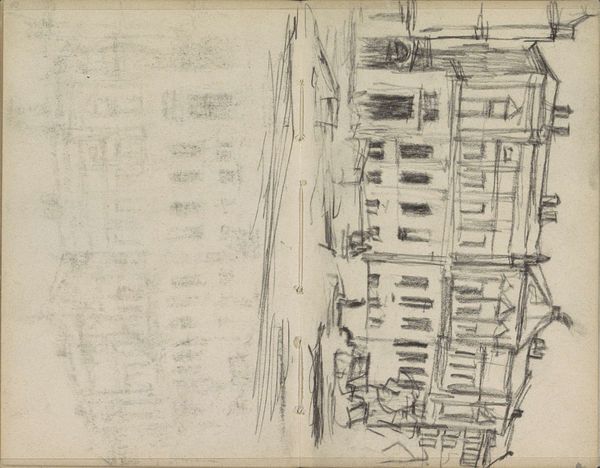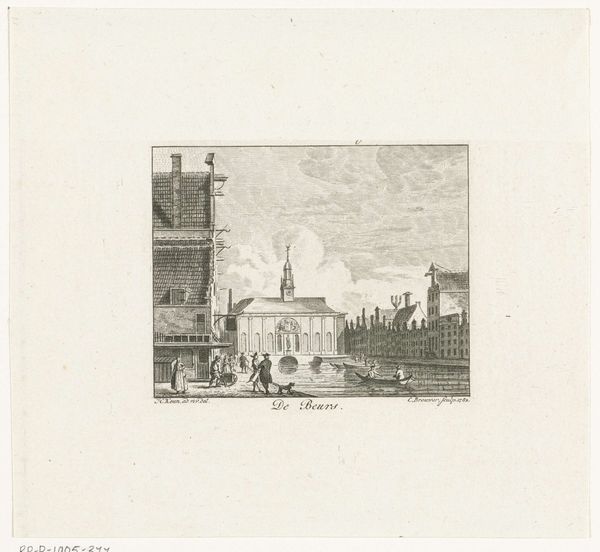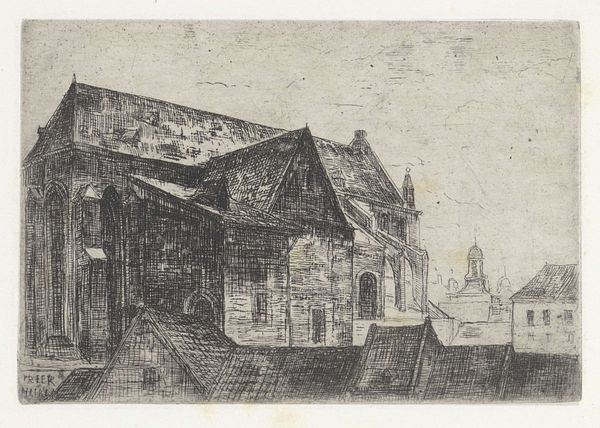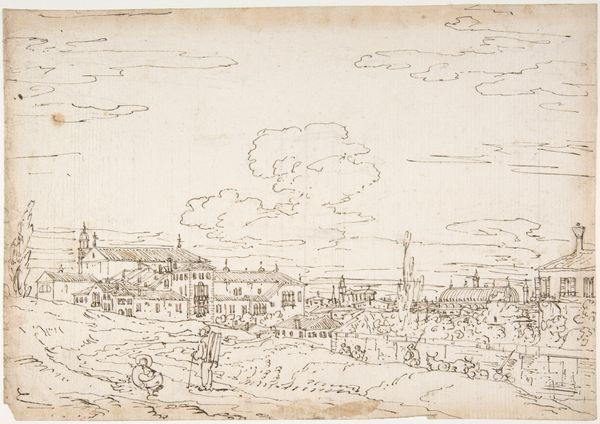
Copyright: Public Domain: Artvee
James Ensor made this print, "The Roofs of Ostend," using etching, a process dating back to the 16th century. It begins with a metal plate, usually copper or zinc, covered in a waxy, acid-resistant ground. The artist then draws through this ground with a sharp needle, exposing the metal. When the plate is dipped in acid, the exposed lines are "bitten," creating incised lines. The longer the plate remains in the acid, the deeper and darker the lines will be. Consider the effect of this fairly laborious process: the image is built from myriad tiny strokes, a bit like a pointillist painting. The subject matter is important, too. Here, Ensor’s attention isn't on grand civic architecture, but on the more vernacular buildings where everyday lives are lived. In this way, Ensor elevates the everyday, revealing the inherent beauty and dignity of the urban fabric itself. So, next time you look at a print, consider not just the image, but the meticulous process and the artist's choice of subject. It all adds to the story.
Comments
No comments
Be the first to comment and join the conversation on the ultimate creative platform.
